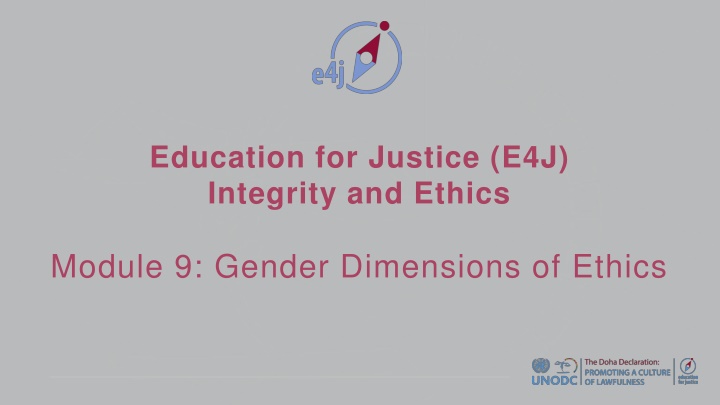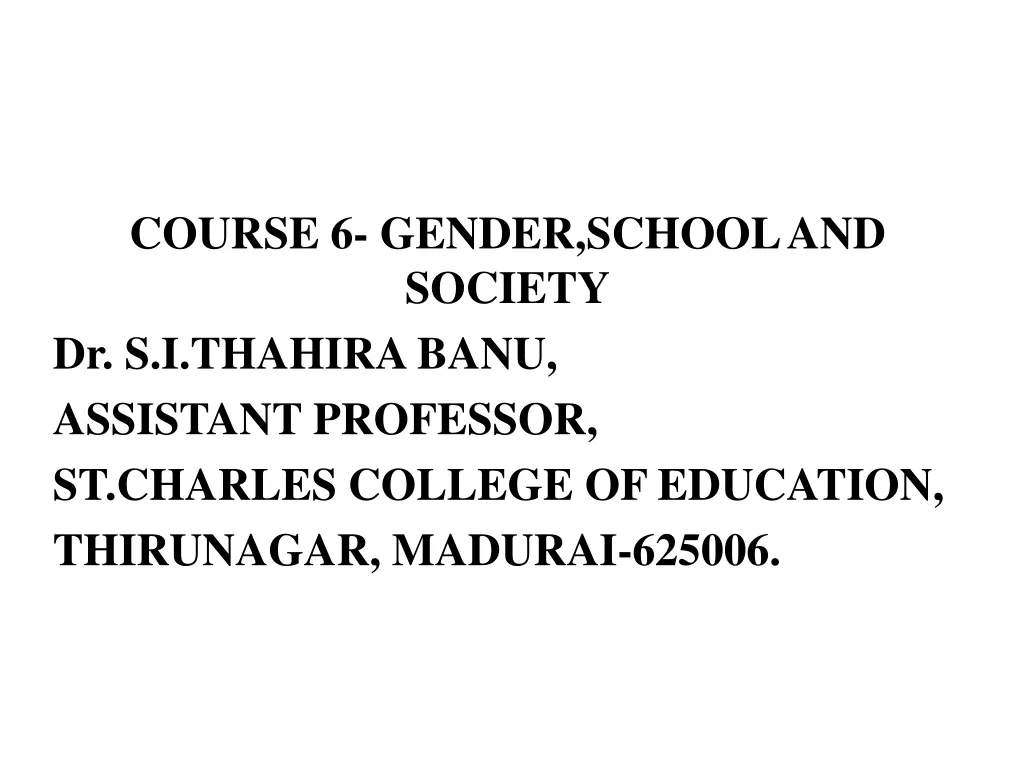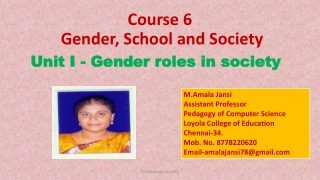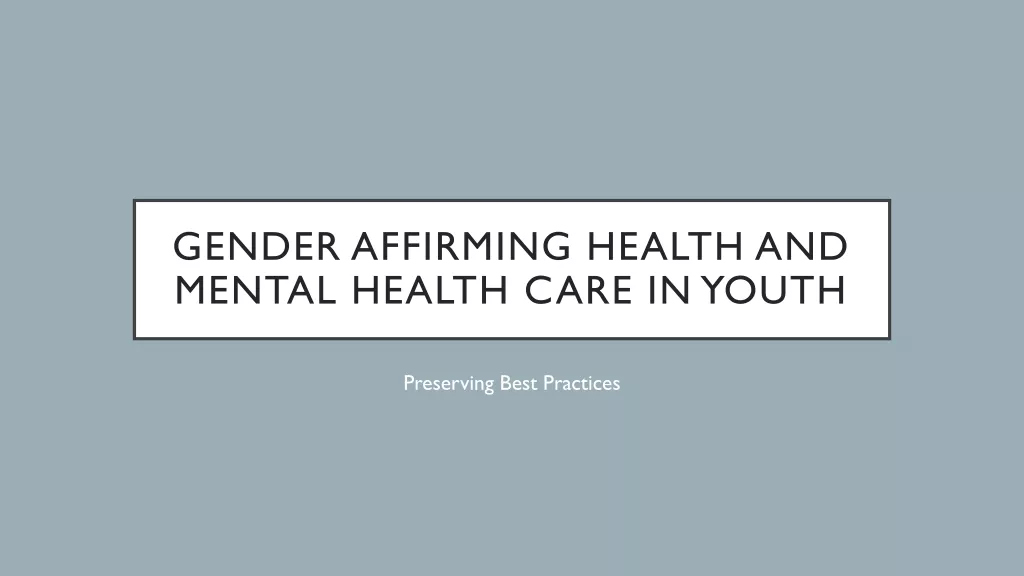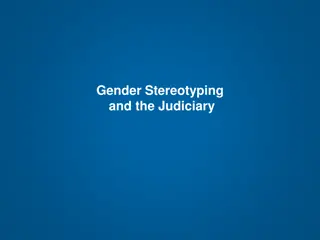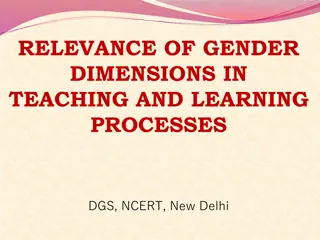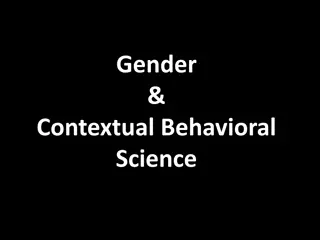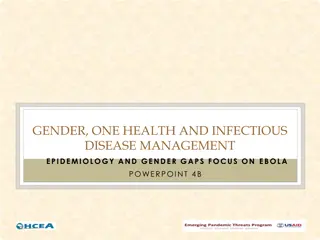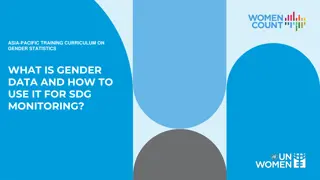Gender Dimensions of Ethics in Education for Justice Module
Explore the Module 9 of Education for Justice (E4J) which delves into the gender dimensions of ethics. Topics include Ethics of Care, gender discrimination, feminism, and combating sexism. Learn how to apply ethical theories to address and prevent gender discrimination effectively.
Download Presentation

Please find below an Image/Link to download the presentation.
The content on the website is provided AS IS for your information and personal use only. It may not be sold, licensed, or shared on other websites without obtaining consent from the author.If you encounter any issues during the download, it is possible that the publisher has removed the file from their server.
You are allowed to download the files provided on this website for personal or commercial use, subject to the condition that they are used lawfully. All files are the property of their respective owners.
The content on the website is provided AS IS for your information and personal use only. It may not be sold, licensed, or shared on other websites without obtaining consent from the author.
E N D
Presentation Transcript
Education for Justice (E4J) Integrity and Ethics Module 9: Gender Dimensions of Ethics
Agenda Class overview (15 minutes) Ethics of Care (25 minutes) Gender discrimination (40 minutes) Balancing self and other (30 mins) Implicit gender bias (30 minutes) Sexual harassment online and at work (30 mins) Conclusion (10 minutes)
Learning Outcomes Upon completion of this module students should be able to: Define gender, gender discrimination, intersectionality, and the Ethics of Care theory Understand the ways in which people are marginalized based on gender, and the ways in which gender intersects with other structures of power Detect sexism in one s everyday life and understand the ways one can combat it individually and collectively Understand feminism and feminist ethics in their historical context Apply the Ethics of Care theory to address and prevent gender discrimination Demonstrate what it means in one s own everyday life to take a moral position against gender discrimination
Introduction to the gender dimensions of ethics Basic terms: gender and gender discrimination Ethics of Care in historical context
Ethics of Care Key characteristics of Ethics of Care (EoC): The complexity and variation in degrees of dependence and interdependence between people and institutions over time are acknowledged and considered. Those people particularly impacted by our choices need to be considered carefully in our decision- making. Those especially vulnerable deserve extra consideration, love and care. Rather than relying on a blanket or one size fits all approach, it is necessary to attend to contextual details of situations in order to safeguard and promote the actual specific interests of those involved.
Gender discrimination Forms of gender discrimination: Sexism Implicit sexism Sexual harassment Sexual assault
Gender discrimination (exercises) E1: Privilege is invisible to those who have it E2: The power walk (role play)
Balancing self and other How to determine where to start and stop caring? How to implement EoC approach in our own lives in everyday situations involving gender inequality? How to address our own implicit gender-based biases
Balancing self and other (exercise) E3: Self vs. other
Implicit gender bias E4: The Gender-Career Implicit Associations Test E5: Gender equity in recruitment advertisements ( Gender Decoder )
Sexual harassment online and at work E6: Sexual harassment online E7: Sexual harassment at work
Class wrap up Minute Paper What was the most important thing you learned today? What question remains in your mind?
Core reading Crenshaw, Kimberle (1991). Mapping the margins: intersectionality, identity politics, and violence against women of color. Stanford Law Review, vol. 43, No. 6, pp. 1241-1299. Gaucher, Danielle, Justin P. Friesen and Aaron C. Kay (2011). Evidence that gendered wording in job advertisements exists and sustains gender inequality. Journal of Personality and Social Psychology, vol. 101, No. 1, pp. 109-28. Gilligan Carol (1982). In a Different Voice. Cambridge: Harvard University Press. See especially pp. 24-39. Mohanty, Chandra T. (2003). 'Under western eyes' revisited: feminist solidarity through anticapitalist struggles. Signs vol. 28, No. 2, pp. 499-535. National Women's Law Centre (2017). Equal Pay for Black Women.
Core reading II: Noddings Nel. (1984). Caring: A Feminine Approach to Ethics and Moral Education . Los Angeles: University of California Press Patil, Vrushali (2013). From patriarchy to intersectionality: a transnational feminist assessment of how far we've really come. Signs: Journal of Women in Culture and Society, vol. 38, No. 4, pp. 847-867. Sander-Staudt, Maureen (2018). Care Ethics. The Internet Encyclopaedia of Philosophy. Tronto, Joan (2005). An ethic of care. In Feminist theory: a philosophical anthology, Ann E. Cudd and Robin O. Andreasen, eds. Malden, Massachusetts: Blackwell Publishing. Tronto, Joan C. (2010). Creating caring institutions: politics, plurality, and purpose. Ethics and Social Welfare, vol. 4, pp. 158-71. UN Women (2017). Facts and Figures: Ending Violence Against Women .
